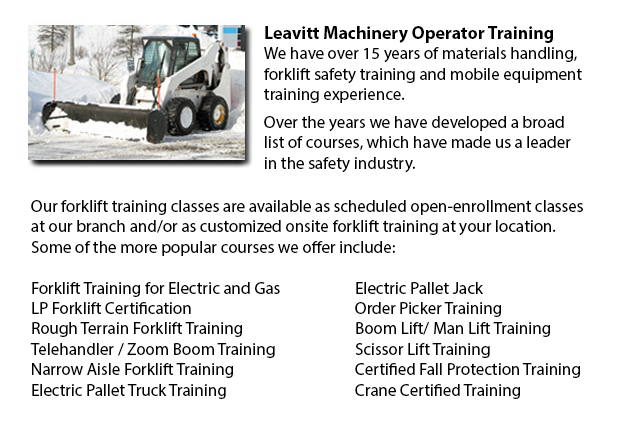
Skid Steer Ticket Alberta - The lift arms on the skid-steer loader are placed beside the driver with pivots at the back of the driver's shoulders. These features makes the skid-steer loader different than the conventional front loader. Due to the operator's proximity to moving booms, early skid loaders were not as safe as traditional front loaders, specially during the operator's exit and entry. Today's' modern skid-steer loaders have numerous features to protect the driver including fully-enclosed cabs. Similar to various front loaders, the skid-steer model could push materials from one location to another, can load material into a trailer or a truck and can carry material in its bucket.
Operation
There are many times where the skid-steer loader could be utilized in place of a big excavator on the jobsite for digging holes from the inside. To begin, the loader digs a ramp to be used to excavate the material out of the hole. As the excavation deepens, the equipment reshapes the ramp making it longer and steeper. This is a particularly functional method for digging below a structure where there is not adequate overhead clearance for the boom of a large excavator. Like for example, this is a common scenario when digging a basement underneath an existing building or house.
The skid-steer loader accessories add much flexibility to the equipment. Like for example, conventional buckets on the loaders could be replaced accessories powered by their hydraulics consisting of sweepers, mowers, snow blades, cement mixers, pallet forks, backhoes and tree spades. Several other popular specialized buckets and attachments include angle brooms, dumping hoppers, wood chipper machines, grapples, tillers, stump grinders rippers, wheel saws, snow blades, and trenchers.
History
During the year 1957, the first front-end, 3-wheeled loader was invented in Rothsay, Minnesota by brothers Louis and Cyril Keller. The brothers invented the loader so as to help a farmer mechanize the method of cleaning turkey manure from his barn. This particular machinery was light and compact and had a rear caster wheel which allowed it to maneuver and turn around within its own length, enabling it to execute similar tasks as a traditional front-end loader.
The Melroe brothers of Melroe Manufacturing Company in Gwinner, N.D. bought during 1958, the rights to the Keller loader. The company then employed the Keller brothers to help with development of the loader. The M-200 Melroe was actually the result of this partnership. This particular model was a self-propelled loader which was introduced to the market during the year 1958. The M-200 Melroe featured a 12.9 HP engine, a 750 lb lift capacity, two independent front drive wheels and a rear caster wheel. By the year 1960, they replaced the caster wheel along with a rear axle and introduced the very first 4 wheel skid steer loader which was called the M-400.
The M-400 shortly became the Melroe Bobcat. Normally the term "Bobcat" is utilized as a generic term for skid-steer loaders. The M-440 was powered by a 15.5 HP engine and had 1100 lb rated operating capacity. The business continued the skid-steer development into the middle part of the 1960s and introduced the M600 loader.
-
Crane Training School Alberta
Crane Training School Alberta - The crane training school provides industry-relevant programs. Courses provide trainees with learning results which match current industry demands. Our small class sizes combine theory and hand-on experience. Our quali... More -
Aerial Lift / Boom Lift / Man Lift / Scissor Lift Training in Alberta
Scissor platform lifts are lift truck tables which lift up materials and people and supplies vertically. They are normally utilized in commercial, industrial and construction environments. A common use of scissor lifts is for lowering or lifting cons... More -
Forklift Certification Courses Alberta
Forklift Certification Courses Alberta - Forklift certification really helps to be able to ensure that businesses are following regulations and legislation. Forklift operators must go through certification prior to being permitted to run machinery. I... More -
Manlift Ticket Alberta
Manlift Ticket Alberta - The Elevated Platforms and Manlifts Certification program helps to provide the required training on the safe operating procedures, work practice, rules and regulations regarding the daily activities for the operators of this... More -
Crane Safety Training Alberta
Crane Safety Training Alberta - Both crane driver and their supervisors have to be aware of all the possible problems associated to the operation of an overhead crane. All over North America, there is legislation which provides rules for the safe ins... More -
Fall Protection Training in Alberta
There are high numbers of injuries at work connected to falling and a lot of fall-related deaths reported each year. Most of these instances might have been avoided with better training, better measures in place, and by correctly equipping staff befo... More -
Scissor Lift Ticket Alberta
Scissor Lift Ticket Alberta - Scissor hoists have significantly benefited construction operations in view of the fact that the work that used to need a lot of effort and lots of people, could now be done using the scissor lift and just one individual... More -
Overhead Crane Training Alberta
Overhead Crane Training Alberta - An overhead crane is a huge crane utilized to move and lift large, heavy things that can't be lifted by hand. An overhead crane is typically fixed in place when in use. These machinery are capable of moving huge volu... More

Forklift Training Alberta
TOLL FREE: 1-888-254-6157
forkliftcertificationalberta.com/
Email Us
About Us


